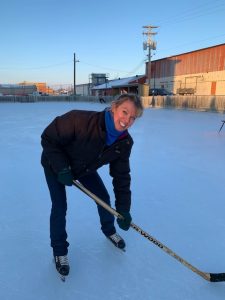January Blues? What are the January blues? Is there such a thing?
Yes as seasons change some folks suffer from seasonal depression such as January winter blues.
Personally, January seems the longest month of the year. Nothing to look forward to after New Years’. Holidays are over, bills come in, there is the let-down of people who visited have left, days are shorter and the weather where I live usually is bloody cold with -30 C. For folks who do not live in a winter climate that is colder than your freezer. BRRR.
This year is a lot different. First, there were no holiday visits, not family or friends, financial stress, months of fear, and isolation from the current pandemic and the weather to date have been unseasonably warm. Yet I have the January blues. It is important to be aware, acknowledge it, and finds ways to cope to avoid sinking into a deep depression.
Set yourself up for success. Divide the day, week, or month into sections and fill each section with something inside or outside, fun, interesting, an activity, hobby, meditation, anything to keep you busy in a positive distraction.
From the article in Psychology Today on winter blues:
Bracing for the Winter Blues
Is it just the “winter blues” or a more severe case of seasonal depression?
A change in season almost inevitably brings a change in mood for approximately 5 percent of the population. Although this occurs in spring or summer for a small number of people, seasonal-related mood disturbance is significantly more prevalent during the winter months. This makes sense, given winter’s shorter days, greyer skies, decreased sunlight, and lower Vitamin D production, not to mention the painfully bitter cold in many parts of the country.
The description alone can be enough to put a damper on one’s mood. Commonly known as “seasonal affective disorder” (SAD) or “winter depression,” seasonal-related mood disturbance is in fact not a standalone diagnosis; it is a subtype of clinical depression.

Weather changes have an impact on me and for the longest time did not recognize it as feeling ‘the winter blues’. Once this became evident I have pivoted from suffering to be proactive in my mental health during the winter months. It is the little things we can do each day that makes a huge difference in our mental and physical health.
Clinical Depression vs. “The Blues”
Many of us are affected to some degree by changing weather patterns. But how do we know if what we are feeling is simply the “winter blues” or something more serious?
According to the Diagnostic Statistical Manual of Mental Disorders (DSM-5), to qualify as a clinical disorder, the depressive episodes must occur and end at the same time of year over at least two years, with the number of episodes being greater than non-seasonal episodes, and when symptoms become disabling or begin to interfere with relationships and day-to-day functioning.
Some symptoms of Winter Pattern SAD include:
- Low energy
- Sleeping too much or too little
- Overeating
- Weight gain
- Craving carbohydrates
- Isolating or “hibernating”
- Pervasive sadness
- Lack of interest in once enjoyable activities
- Lack of motivation
Speaking from experience when it is cloudy for days and days I feel depressed, feeling down, and less motivated and energetic. My daughters live in Vancouver where it rains in the winter with lots of cloudy days. Originally from the prairies where even in winter chills we have the beautiful sun, they notice and feel the difference. They purchased the SAD (Seasonal Affect Disorder) light which is most beneficial
Seasonal Affective Disorder, or SAD, is a type of recurrent major depressive disorder in which episodes of depression occur during the same season each year. This condition is sometimes called the “winter blues,” because the most common seasonal pattern is for depressive episodes to appear in the fall or winter and remit in the spring. Less commonly, SAD occurs as a summer depression, typically beginning in the late spring or early summer and remitting in the fall. SAD may be related to changes in the amount of daylight a person receives
During the last several months most of us are already feeling ‘the winter blues’
a holdover from the ‘spring and summer blues’ because of COVID. Getting over these feelings depends on what coping skills you have and what works best for you each day. Coping and self-care tools skill to look and feel different for everyone.
If you don’t have a self-care tool kit, create one today. No idea what that looks like? Check out some of the tools in my self-care kit and see if there is something you could use. The idea is to have a creative spark of ideas. Check out your healthy eating, which is a healthy lifestyle. Be aware of what you are eating and why. Fitness walks outside, baking, photography, reading, writing, mediation, yoga, funny movies, journalling, virtual visits, phone calls, skating, skiing, learning Italian, piano, music, coffee alone or with a friend (virtual works) going for a walk, snow blowing the driveway ( yes that is something I find enjoyable).

Make a collage (pictures, drawings) of all the things you liked as a child, youth, etc. Make a dream board of all the things you dream to do, have, see, visit, and experience.

This is a new year and new opportunities to move forward with a positive attitude and in our choices. We have to accept that there are events in life we cannot control, what we can have complete control over, is our attitude. Our attitude has a direct impact on our mental health. Focus on how you can be happy, feel safe, and loved. Self-care is the love of thyself because no one can make you happy but you. That is empowering.!
Never give up. Seek out positive folks, professional help if needed, create your self-care tools and strategies and hobbies, mediate or other forms of relaxation( I like the CALM App), try to do some form of fitness, and set your winter up for success. Feeling depressed? Seek out professional help if needed. Life is a gift.
